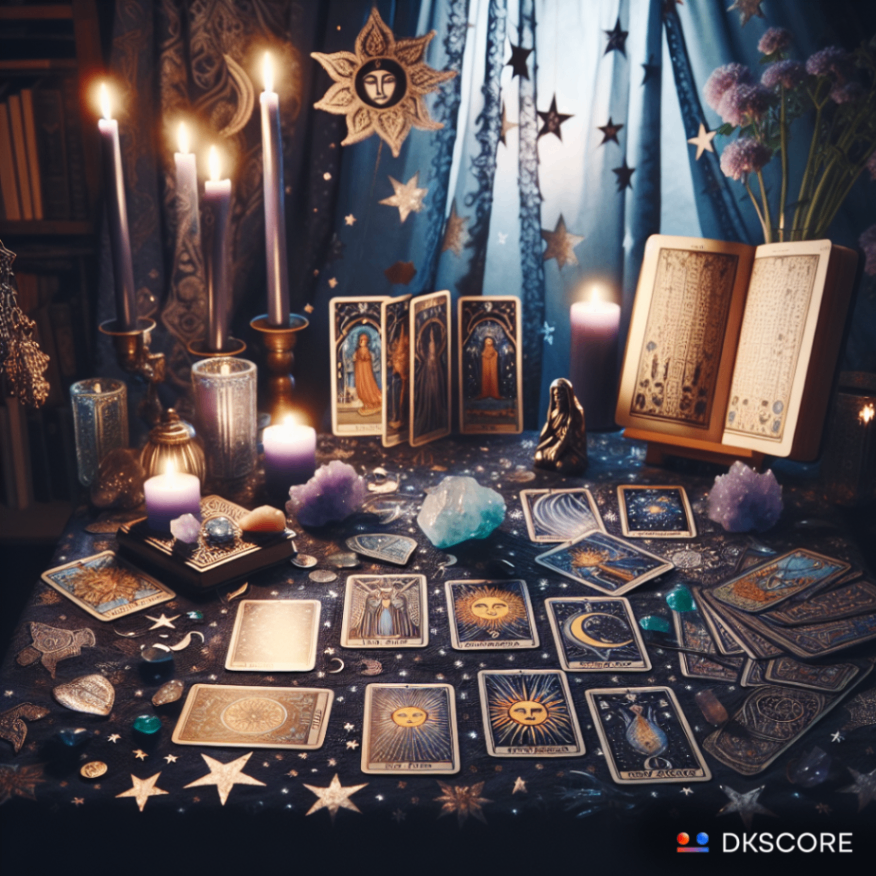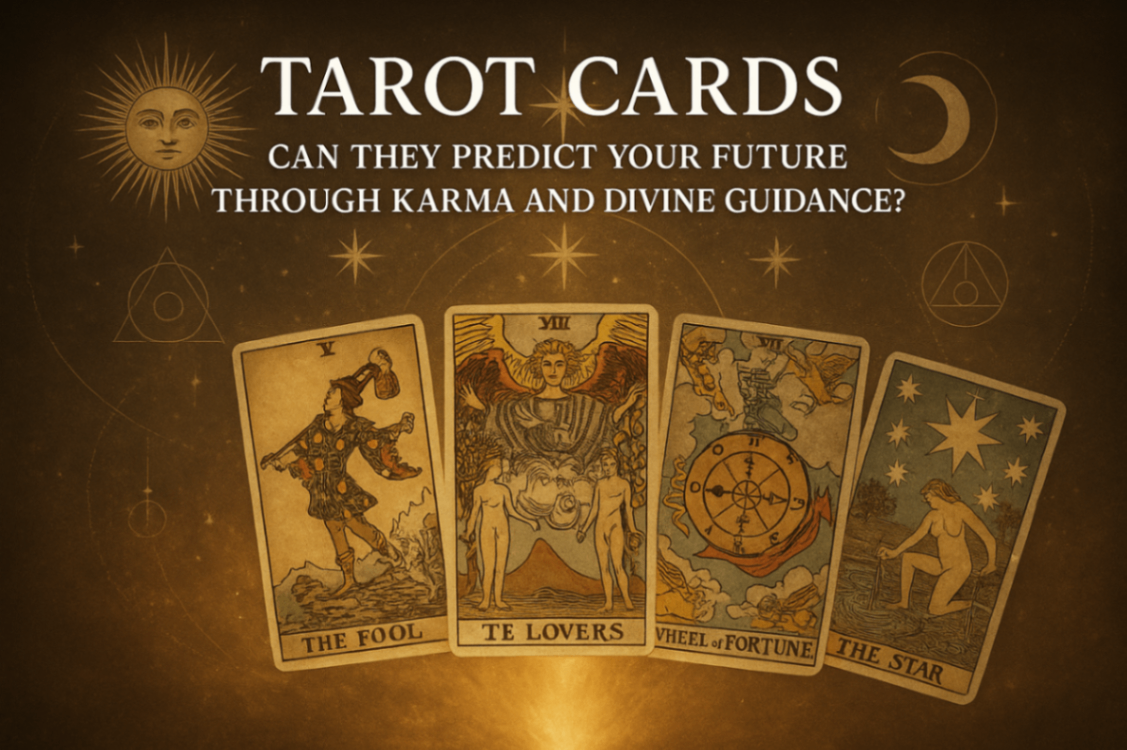Basic Fundamentals of Tarot Cards
Introduction
Tarot cards are a powerful tool for self-discovery, offering insights into our subconscious mind and helping us navigate lifes challenges. This guide will walk you through the basic fundamentals of tarot cards, explaining how they work, what each card represents, and how tarot cards connect to Vedic astrology. Whether youre new to tarot or looking to deepen your understanding, this article will provide you with valuable knowledge to enhance your tarot card reading skills.
The Structure of a Tarot Deck
A tarot deck consists of 78 cards divided into two main categories: the Major Arcana and the Minor Arcana. The Major Arcana contains 22 cards, each representing significant life events, spiritual lessons, and universal themes. These cards often signal major turning points or challenges in ones life.
For those interested in understanding tarot in their native language, exploring tarot card reading in Hindi can offer a culturally resonant experience. Whether its tarot card reading Hindi or another language, the essence of the cards remains universal, though the interpretation might align more closely with cultural nuances.
The Minor Arcana includes 56 cards divided into four suits: Wands, Cups, Swords, and Pentacles. Each suit corresponds to different aspects of daily life and human experience:
Wands: Represent action, creativity, and passion.
Cups: Symbolize emotions, relationships, and intuition.
Swords: Reflect thoughts, communication, and conflict.
Pentacles: Concern material aspects, such as finances, health, and career.
Detailed Description of Major Arcana
The Fool: Represents new beginnings, taking a leap of faith into the unknown. The imagery shows a figure about to step off a cliff, symbolizing a journey or significant life change.
The Magician: Symbolizes the power of creation, using all resources at hand (represented by the four suits) to manifest desires. This card is about skill, resourcefulness, and willpower.
The High Priestess: Associated with intuition, hidden knowledge, and the unconscious mind. The card depicts a figure holding a scroll, representing wisdom and the mysteries yet to be revealed.
The Empress: A card of fertility, creativity, and nurturing energy. Often depicted with symbols of Venus and nature, this card encourages growth and the birth of new ideas.
The Emperor: Represents authority, structure, and control. The Emperor is a leader, providing stability and order.
The Lovers: Indicates relationships, choices, and harmony. This card can signify love or a decision that will have significant emotional consequences.
The Chariot: Represents determination, victory, and the journey forward. It often appears when one must take control and steer their path with confidence.
Strength: Symbolizes inner strength, courage, and patience. The imagery often shows a figure gently taming a lion, emphasizing control over primal instincts.
The Hermit: A card of introspection, solitude, and seeking wisdom. The Hermit encourages a time of reflection and inner guidance.
The Wheel of Fortune: Indicates change, cycles, and the ups and downs of life. This card reminds us that life is in constant motion, and fate plays a role in our journey.
Justice: Represents fairness, truth, and law. This card often appears when issues of justice, legality, or personal integrity are at the forefront.
The Hanged Man: Suggests suspension, letting go, and seeing things from a different perspective. It often signifies a need for patience or sacrifice.
Death: Contrary to popular belief, the Death card does not signify literal death but rather transformation, endings, and new beginnings. Whether youre doing a tarot card reading today or reflecting on past readings, understanding the deeper symbolism of this card is essential.
Temperance: Symbolizes balance, moderation, and harmony. It encourages a careful and measured approach to life.
The Devil: Represents temptation, materialism, and self-imposed limitations. This card warns against being trapped by desires and urges the querent to seek liberation.
The Tower: A card of sudden upheaval, revelation, and chaos. It often appears when foundations are being shaken, leading to a necessary transformation.
The Star: A symbol of hope, inspiration, and renewal. The Star brings optimism and a sense of purpose after a challenging time.
The Moon: Represents illusions, intuition, and the subconscious. The Moon card suggests that not everything is as it seems, urging one to trust their instincts.
The Sun: This card represents success, positivity, and vitality. It often appears when the querent is on the verge of a breakthrough or experiencing personal growth.
Judgment: Indicates a time of reckoning, reflection, and awakening. It calls for a review of past actions and decisions to move forward with clarity.
The World: Represents completion, fulfillment, and achievement. The World card signals the end of a cycle and the beginning of a new phase.
How to Read Tarot Cards
Tarot card reading is both an art and a science. Each cards meaning is influenced by its position in a spread, the question asked, and the readers intuition. The basic process of a tarot reading involves shuffling the deck while focusing on a question or issue, drawing cards, and interpreting their meanings based on their position in the spread.
Popular Spreads
One of the most popular spreads is the three-card spread, which provides a simple yet effective way to gain insights into past, present, and future influences. Another common spread is the Celtic Cross, which offers a more detailed analysis of the querents situation by using ten cards.
Insights from Specific Tarot Cards
Certain tarot cards hold particular significance in readings:
Death Tarot Card Meaning: Contrary to popular belief, the Death card does not signify literal death but rather transformation, endings, and new beginnings. Whether youre doing a tarot card reading today or reflecting on past readings, understanding the deeper symbolism of this card is essential.
Tarot Card The Sun: This card represents success, positivity, and vitality. It often appears when the querent is on the verge of a breakthrough or experiencing personal growth.
Tarot Cards and Vedic Astrology
While tarot cards and Vedic astrology are distinct systems of divination, they share common themes and can complement each other. Vedic astrology, based on the positions of celestial bodies, provides insights into ones karmic path and life events. Tarot cards, through their archetypal imagery and symbolism, tap into the querents subconscious mind, revealing hidden truths and guiding decisions.
For example, the Sun card in tarot symbolizes vitality and success, which parallels the role of the Sun in Vedic astrology, where it represents the soul, ego, and life force. Similarly, the High Priestess card, associated with intuition and hidden knowledge, resonates with the Moon in Vedic astrology, which governs emotions and the mind.
Using tarot cards in conjunction with Vedic astrology can provide a more holistic understanding of ones life path, helping to clarify karmic lessons and spiritual growth.
Tips for Tarot Card Reading
Start Simple: Begin with a single card draw or a three-card spread to build your confidence.
Keep a Tarot Journal: Document your readings, observations, and intuitive insights to track your progress.
Use Your Intuition: While traditional meanings are important, trust your instincts when interpreting the cards.
Conclusion
Understanding the basic fundamentals of tarot cards opens the door to deeper self-awareness and spiritual insight. By exploring the connection between tarot and Vedic astrology, you can enhance your readings, gaining a richer perspective on your lifes journey. Whether youre using tarot cards for personal guidance or to assist others, this ancient practice offers endless possibilities for growth and transformation.









